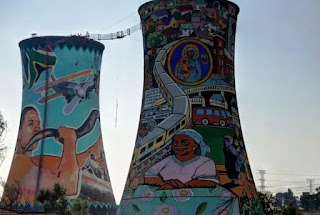Soweto & Apartheid Museum Tour – A Chance to Look At History
Johannesburg is popular for many things - sports, culture, and skyscrapers to name just a few - but if you are planning a holiday in the city, a visit to Soweto should be at the top of your to-do list. A Soweto & Apartheid Museum Tour will let you learn the history and the struggle against South Africa's apartheid regime, which finally ended in the 1990s.
Back then it was a rundown township but, while it is still a far cry from the luxury of the business class seats and five-star hotels you are likely to choose for your holiday to South Africa, the modern Soweto is a symbol of the progress made by the country in recent years.
Emerge with the history
Much of Soweto is unrecognizable from the television footage you will have seen from the 70s and 80s. Some of the neighborhoods remain relatively impoverished, but other parts of the suburb feature developments favored by the new middle class who make they're living in Johannesburg's stylish business district.
But the improvement in living conditions does not mean local people have forgotten Soweto's past and there is a genuine sense of pride in the achievements of some prominent former residents, including Nobel Peace Prize winners Nelson Mandela and Desmond Tutu.
There is a museum dedicated to ex-president Mandela located in the small house he used to call home in Soweto. He lived in the property until he was jailed in 1962 and insisted on returning to it on his release from prison 28 years later.
The building now houses a collection of memorabilia detailing his role in the struggle against the apartheid regime and his rise to become the leader of the newly multi-racial democratic state. There are also a number of personal items on show, including clothing, family photos, and honorary doctorates from universities around the world.
Just a short walk away is the Hector Pieterson Museum, named after a 12-year-old boy shot dead by police on the first day of the Soweto Uprising in 1976. Hector came to symbolize the battle against apartheid after a press photographer captured the image of his mother carrying her gravely-injured son in her arms.
The museum tells the full story of the Soweto Uprising and the brutal tactics used by government forces to quash it, which led to the deaths of more than 550 protesters. It has all the usual types of exhibits you would expect to find in a museum, but what sets it apart is the moving personal recollections of the harrowing events.



Comments
Post a Comment